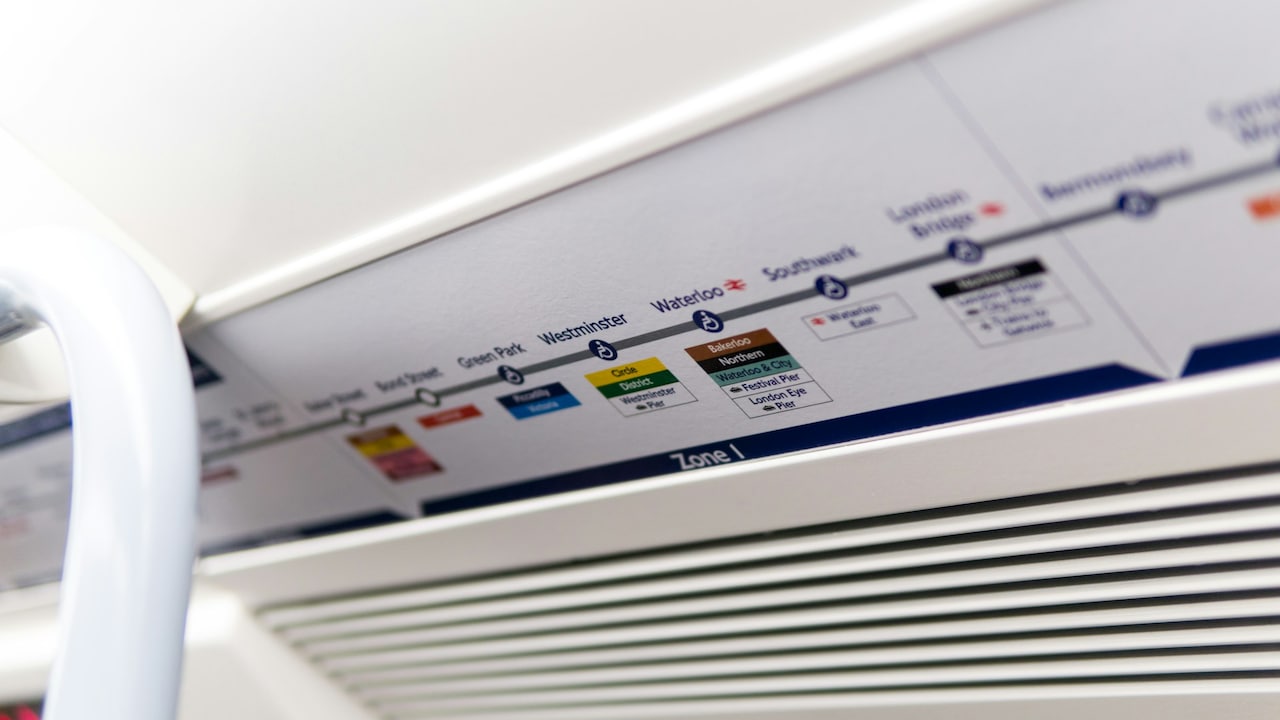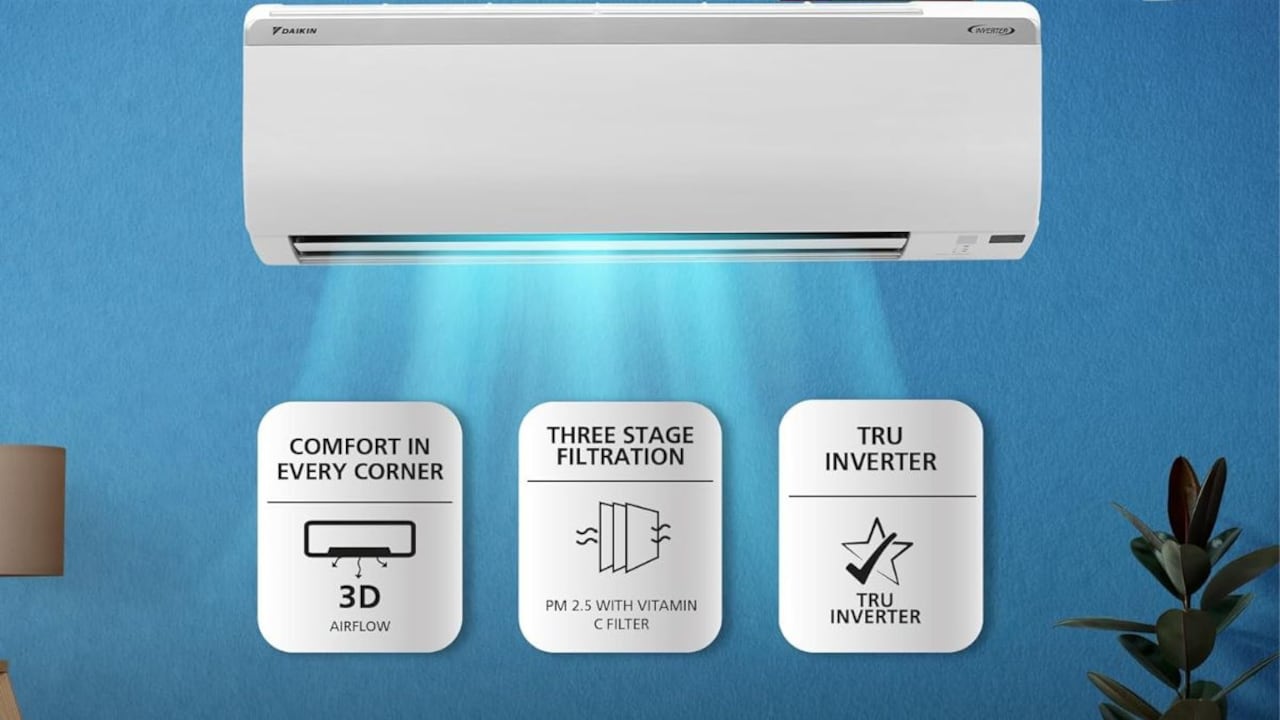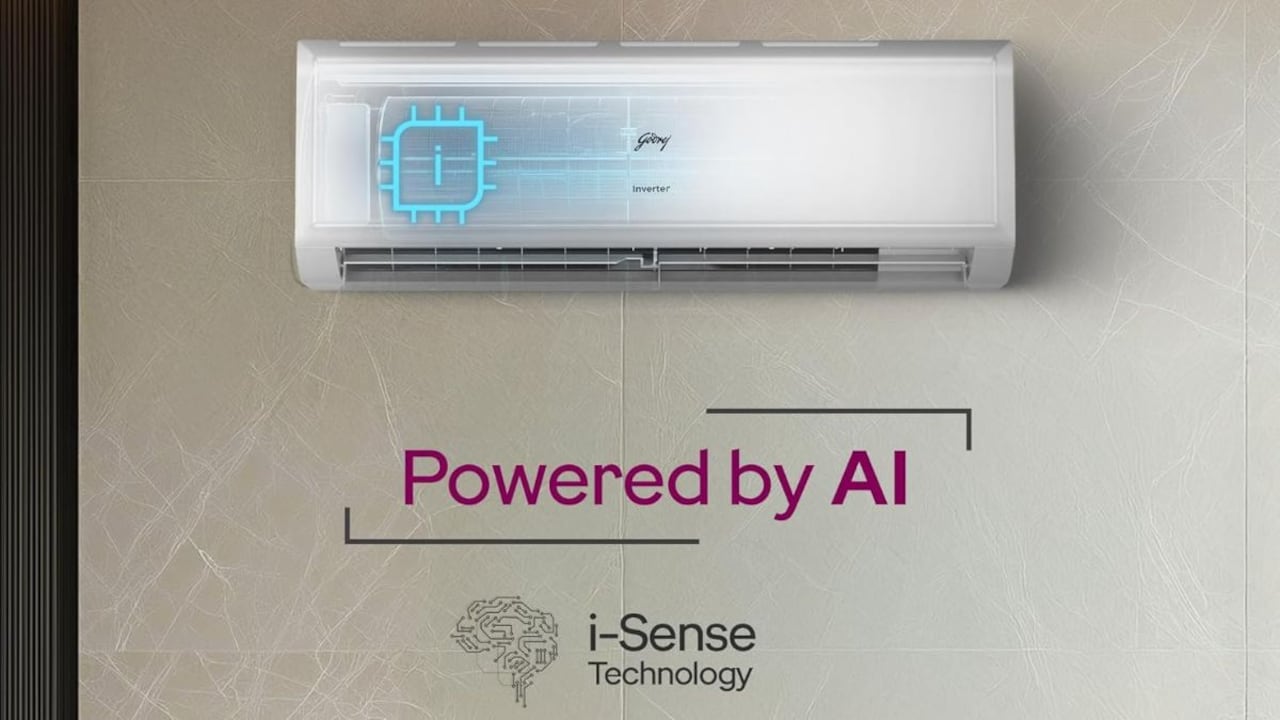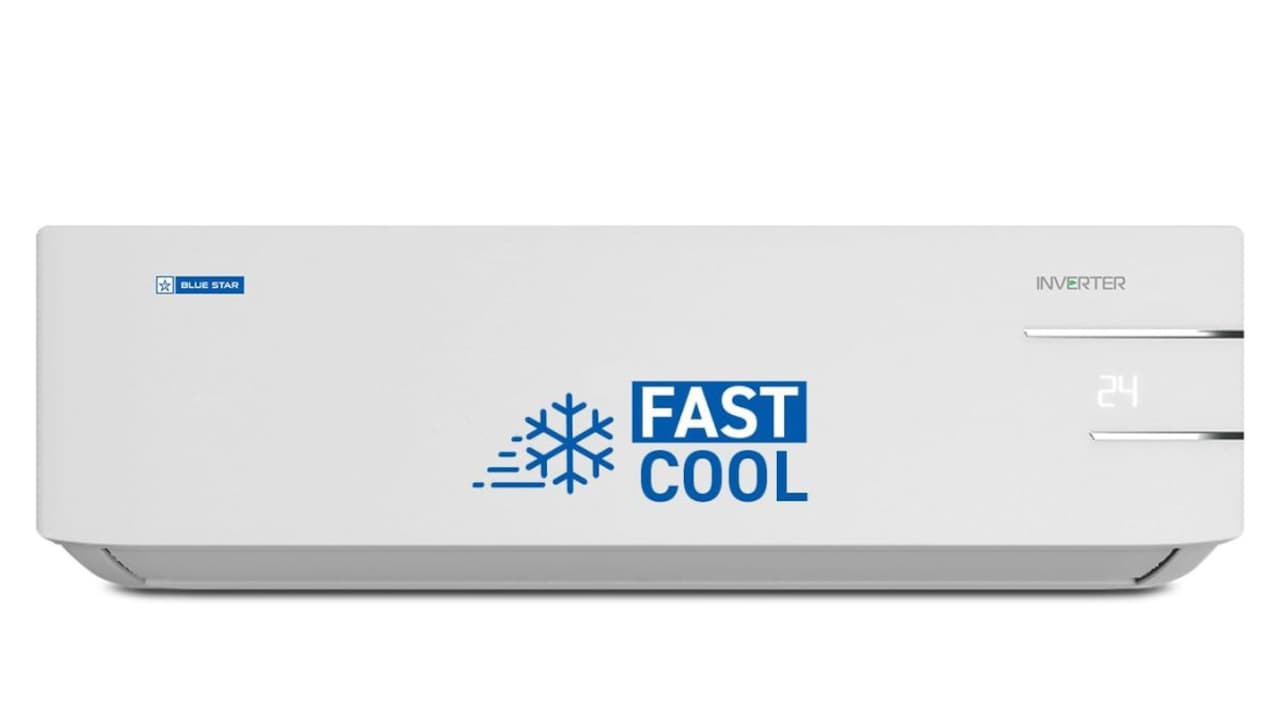How To Clean And Maintain Your AC Filters At Home | 7 Easy Ways To Improve Airflow And Save Energy
Here are 7 simple tricks that show you how to keep AC filters clean, boost air quality, and lighten your energy bills every season.

How To Maintain AC Filters For Better Airflow And Lower Bills | 7 Pro Tips.
When the temperature soars and the fan starts sounding like a tired auto-rickshaw, there's only one saviour, the air conditioner. But even the best AC can't work its magic if its filters are clogged. Think of filters as the lungs of your cooling system. When they're choked with dust, pet hair, or city grime, the air struggles to pass through. The result? Weak airflow, rising electricity bills, and a not-so-cool home.
Most people clean their AC filters only when a technician visits, or worse, when the unit starts wheezing. Yet, maintaining those filters is surprisingly simple. Here is how to clean and maintain your AC filters at home - these 7 easy ways will boost air quality, and lighten your energy bills every season. Check top AC picks too, from LG, Daikin to Hitachi.

Before the next heatwave hits, let's explore 7 practical and easy tips to keep those filters clean, your AC happy, and your bills lighter.
Photo Credit: Unsplash
Also Read: 5 best AC Under ₹60,000 for 2025's Worse-Than-Ever Hot And Humid Monsoon
7 Pro Tips To Maintain AC Filters For Better Airflow And Lower Bills
1. Know Your Filter Type, The First Step To Smart Maintenance
Not all AC filters are created equal. Some are simple mesh filters that catch dust, while others come with advanced layers to trap pollen and bacteria. Split ACs often have washable mesh filters, while premium models include electrostatic or HEPA filters.
Understanding your filter type is essential because cleaning methods differ. Mesh filters can be gently washed under running water, but HEPA or carbon filters may need a light vacuum or a professional touch. Check the user manual, it's not just that booklet gathering dust in the drawer, to know what your model needs.
A small effort in identifying the filter type can save costly mistakes. Imagine soaking an activated carbon filter in water; it'll lose its effectiveness instantly! So, before you grab a sponge and detergent, pause for a moment of curiosity. Knowing your filter ensures it serves you longer and performs better.
2. Set A Monthly Cleaning Routine, Your AC Deserves Regular Care
A clean filter isn't a luxury; it's maintenance 101. Yet, it's easy to forget amid busy routines. A simple habit, cleaning the filters once every three to four weeks during peak usage, can make a world of difference.
Think of it like brushing your teeth. You wouldn't skip it for a week and hope for a fresh smile, right? Similarly, dust builds up fast, especially in homes near main roads or construction sites. Clogged filters make your AC work harder, increasing electricity use by up to 15%. That's money escaping silently every month.
Set a reminder on your phone or mark your calendar, “AC cleaning day.” Use a soft brush or vacuum cleaner to remove loose dust. For washable filters, rinse under cold water and dry completely before reinstallation. A consistent routine keeps the air crisp, the unit efficient, and your wallet happier.
3. Handle Filters With Care, Rough Cleaning Can Cost You
In a rush to get the job done, many people scrub filters like they're washing an old carpet. That's a big mistake. AC filters are delicate and made of fine mesh or fabric layers that tear easily. Once damaged, they lose their ability to trap particles, allowing dust and allergens to circulate indoors.
When cleaning, avoid harsh detergents, hot water, or aggressive brushing. Use mild soap if needed and let the filter soak for a few minutes before gently rinsing. Avoid twisting or squeezing the filter to remove water; simply shake off excess and air dry in the shade.
Remember, filters are not just mechanical parts; they're the gatekeepers of your home's air quality. Treat them kindly, and they'll reward you with cooler air, cleaner lungs, and lower bills.

Avoid harsh scrubbing and cleaning agents to prevent the filters from damage; Photo Credit: Amazon
4. Keep The Surroundings Clean, Prevention Is Easier Than Cure
Even the cleanest filters can get clogged faster if your room gathers dust easily. Think of it as teamwork; if you help reduce dust in the environment, your AC won't have to battle so hard.
Simple steps go a long way. Regularly dust your furniture, close windows during windy afternoons, and consider using curtains that trap less dust. Vacuuming carpets and sofa fabrics also helps reduce airborne particles that eventually find their way into the filters.
If your home is near a busy road, invest in door seals or draught stoppers. These little additions keep fine dust from sneaking in. Clean surroundings not only reduce filter maintenance but also improve indoor air quality. After all, what's the point of a powerful AC if it's circulating dusty air?
5. Check For Mould And Moisture: The Hidden Enemies Of Fresh Air
Filters love to trap more than dust; they can also collect moisture, especially during humid months or when the AC runs for long hours. This moisture can lead to mould or bacterial growth, which often causes that musty smell when you turn on the unit.
To prevent this, ensure filters are completely dry before reinstalling. If you notice black spots or a persistent odour, it's time for a deeper cleaning or even replacement. Running the AC in “fan mode” for 10–15 minutes after cooling helps dry internal components and prevents moisture build-up.
A little vigilance goes a long way. Clean filters keep the air not just cooler but also healthier. After all, fresh air shouldn't come with a side of damp smell or sneezes.
6. Replace When Needed, Old Filters Can Do More Harm Than Good
Filters have a lifespan, just like tyres or batteries. No amount of cleaning can revive a filter that's worn out or permanently clogged. Using an old filter forces your AC to work harder, reducing cooling and increasing power consumption, the exact opposite of what you want.
As a general rule, replace washable filters every six months to a year, depending on usage and environment. Non-washable or advanced filters, such as HEPA or carbon, might need earlier replacement. Keep an eye out for signs, reduced airflow, louder operation, or an AC that seems to cool more slowly than before.
While a replacement may cost a few hundred rupees, it's a small investment compared to an inflated electricity bill or a malfunctioning compressor. Treat filter replacement as an act of preventive care, not an expense.

Replace old filters as and when needed; Photo Credit: Amazon
7. Book A Professional Service Twice A Year, Expert Eyes See More
Even with diligent cleaning, some parts of the AC need expert attention. Professional technicians can remove deep-seated dust, check for leaks, and clean coils, things that go beyond basic maintenance.
Schedule servicing before the summer begins and once before winter sets in. This ensures your unit runs efficiently year-round. A full-service session typically costs around ₹500–₹800, but it can save thousands by improving performance and preventing costly repairs.
A professional tune-up also helps maintain the warranty and identifies issues early, from refrigerant leaks to damaged insulation. When your AC gets expert care, it not only cools better but also lasts longer, offering you peace of mind through every heatwave.
8. Use The Right Mode, Don't Overwork Your AC
It's tempting to set the temperature to 18°C on a sweltering day, but doing so only strains the unit and the filters. Constant high-speed airflow pushes dust into the filters faster. Instead, maintain a comfortable 24–26°C. It cools effectively, keeps humidity in check, and reduces energy use.
Many modern ACs come with energy-saving or eco modes. These settings optimise compressor performance and reduce the load on filters. Pair this with a ceiling fan to circulate air evenly, and you'll notice both comfort and savings improve.
Small changes in usage habits can significantly extend filter life. Remember, the goal is steady comfort, not a mini-Arctic experience in your living room.
9. Keep Outdoor Units Clean: What Happens Outside Affects Inside
The outdoor unit plays a vital role in cooling efficiency. When it's covered in dust or leaves, the AC's overall performance dips, and filters end up working harder to compensate.
Check the outdoor unit every few weeks. Clear any debris, leaves, or bird feathers around it. If it's installed near a busy street or a construction site, consider adding a shade or grill cover that allows airflow but blocks grime.
A clean outdoor unit means better heat exchange, less strain on filters, and smoother cooling indoors. Think of it as giving your AC a cleaner environment to breathe freely.

Always clean the outer unit of the AC for proper maintenance; Photo Credit: Amazon
10. Mind The Monsoon, Seasonal Adjustments Matter
The rainy season brings cool breezes but also higher humidity and fine dust particles. Filters can become damp or sticky, inviting mould. During these months, increase your cleaning frequency to every two weeks.
Also, avoid covering the outdoor unit completely with plastic sheets, as it traps moisture inside. Instead, use breathable covers that shield against rain without suffocating the system. After the monsoon, give the filters a thorough wash and let them dry in the sunlight.
Seasonal attention keeps your AC performing efficiently across changing weather patterns, whether it's the dusty summer, humid monsoon, or mild winter.
Products Related To This Article
1. Cruise 1 Ton 3 Star Inverter Split AC with 7-Stage Air Filtration
2. Voltas 1.5 ton 3 Star, Inverter Split AC
3. Carrier 1.5 Ton 3 Star Wi-Fi Smart Flexicool Inverter Split AC
4. Daikin 1.5 Ton 5 Star Inverter Split AC
5. Hitachi 2 Ton Class 3 Star Xpandable
6. LG 1.5 Ton 5 Star DUAL Inverter Split AC
7. Hitachi 2 Ton Class 5 Star Xpandable+ Inverter Split AC
An air conditioner is more than a machine; it's a daily comfort companion that battles the heat so you can rest easy. But even the mightiest cooling system depends on one simple thing: clean filters.
By following these seven (plus a few bonus) tips, you not only ensure smoother airflow and lower electricity bills but also create a fresher, healthier living space. Each small step, from gentle cleaning to mindful usage, adds up to big savings and better comfort.
So, before switching on the AC tonight, take a few minutes to check those filters. A clean filter means cleaner air, efficient cooling, and a lighter electricity bill. After all, cool comfort shouldn't come at the cost of energy or health; it should come with a breath of fresh, chilled air.
Disclaimer: The images used in this article are for illustration purpose only. They may not be an exact representation of the products, categories and brands listed in this article.
























